The RAF in France was split into two parts. Firstly, the Air Component of the British Expeditionary Force (ACBEF), comprising initially of four Hurricane squadrons, four Blenheim squadrons and four army-co-operation Lysander squadrons. These units were predominantly based in the Pas de Calais area to support the BEF units which were digging in on the Franco-Belgian frontier. Secondly, the Advanced Air Striking Force (AASF), initially consisting of ten Battle light bomber squadrons based on airfields around Reims. These aircraft were to support French Army units along the Franco-German border and the much vaunted Maginot Line.
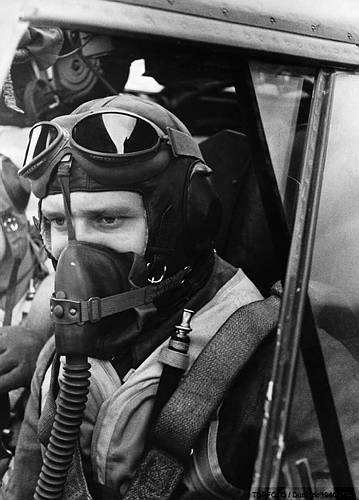
As early as September 1939, the high loss rates of French reconnaissance aircraft and British Fairey Battle bombers had prompted the suspension of unescorted daylight sorties along the Franco-German border.
Due to poor weather over the Western Front, air operations were greatly restricted during October. However, improving weather and the transfer of Luftwaffe units from Poland to the West meant that air activity and aircraft losses increased markedly during November. At around this time, two RAF Gloster Gladiator bi-plane fighter squadrons were added to the ACBEF forces.
The onset of the harshest winter for 50 years severely curtailed the operations of both sides over the frontier in the months of December, January and February. However, further north, an incident on the 18th December was to have a profound impact on the future of RAF strategic bombing policy. On this day, RAF Bomber Command despatched 24 Vickers Wellington bombers from England in a daylight raid to bomb German warships in the area of Heligoland Bight. By the time German airspace had been reached, two of the Wellingtons had returned to base with mechanical issues. The formation was tracked by German Naval radar and intercepted in strength by Messerschmitt 109 and 110 fighters. In the running battles that followed, 12 of the bombers were shot down, with a further six crashing, or crash landing with battle damage on reaching the English coast. This unacceptable rate of loss, on top of other costly raids earlier in the month, finally convinced the RAF High Command that in future its strategic bomber offensive over Germany would need to be conducted by night.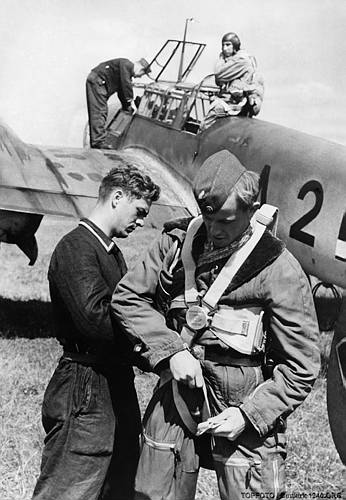
In March 1940, the decision was made to utilise the French-based Fairey Battle bomber force in night-time leaflet drops (Nickel raids) and the mining of inland waterways. The mix of unsuitable aircraft and crews inexperienced in night flying, meant that losses due to accidents were painfully high. The improving weather conditions also saw an escalation in Luftwaffe high altitude offensive fighter sweeps, which led to a series of clashes, with losses on both sides. A similar pattern followed in April, with the Germans stepping up their air reconnaissance activities.
Rumours of a German attack were rife in France during early May. The long-expected German offensive commenced in the early hours of the 10th May with the invasion of neutral Belgium, Netherlands and Luxembourg. The ground offensive was combined with heavy air attacks on airfields and communication centres in these countries and also in France, where 45 airfields were hit in the initial onslaught. Much of the Dutch and Belgian air forces were destroyed on the ground in these early raids and those that did get airborne were overwhelmed by the numerical and technical superiority of the Luftwaffe fighters.
In the Netherlands and at the key bridges over the River Meuse, German paratroopers were used to secure vital objectives. British Blenheim bombers and long-range fighters flew sorties from England in an attempt to destroy the bridgeheads established by German paratroopers at Waalhaven, Den Haag and Ypenburg. Large numbers of German transport aircraft were destroyed in these operations and by the Dutch defences, but the paratroopers could not be dislodged.
Concerted air battles were fought all over the Western Front, but only a handful of RAF and French bombers were engaged in the bombing of German army columns advancing in Belgium and Luxembourg. The scale of the carnage can be gauged by the fact that during the first day of Blitzkrieg, the Luftwaffe quartermaster returns indicated 204 transport aircraft, 130 bomber and reconnaissance machines and 13 fighters were lost. Far higher losses than any day in the more celebrated Battle of Britain.
The following day, the Luftwaffe again mounted heavy raids on airfields in France and at Condé-Vraux, No. 114 Squadron's Blenheims were wiped out in a low-level German attack. The RAF, acting on intelligence reports, sent eight Battle bombers to attack enemy forces in Luxembourg, but only one aircraft returned. Meanwhile, the lack of a co-ordinated air defence system over France was hampering Allied fighters in their attempts to intercept the large and often heavily-escorted German bomber formations.
On the 12th May, the Luftwaffe moved its focus to attacks on communications in the immediate rear of Allied ground forces. British and French bombers were sent to attack German army formations between Maastricht and Gembloux and to bomb the bridges over the Meuse. The attacking formations were virtually wiped out by heavy flak and the strong German fighter cover.
By the 14th May, German forces had broken through the French front at Sedan. With the situation desperate, all remaining RAF Battles and Blenheims were ordered to attack pontoon bridges and troops in the area. Out of 71 aircraft, 39 were shot down; the highest loss in an operation of this size ever sustained by the RAF. Late in the afternoon, 57 Heinkels of KG54 launched a devastating attack on Rotterdam city centre, resulting in 814 civilian casualties and the surrender of all Dutch forces. Urgent requests from the French government for a further 10 more squadrons were refused by Air Chief Marshall Dowding and the British War Cabinet.
Due to the deteriorating military situation, breakdowns in communication and flawed intelligence, a number of unfortunate incidents took place on the 17th May. In the morning, twelve Blenheims were sent by RAF Bomber Command to attack enemy tanks and troops near Gembloux. Tragically, they failed to rendezvous with their fighter escort and 10 were shot down by fighters and one by ground fire.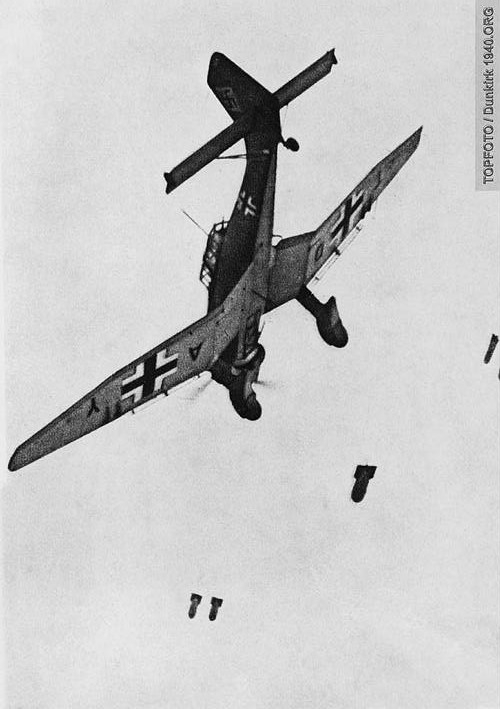
In both the morning and afternoon, RAF bombers attacked French columns in error, causing heavy casualties.
By the 19th May, the rapid German advance posed a serious threat to the remaining RAF squadrons in Belgium. Evacuation of these units was carried out over the next two days, and henceforth, fighter operations over the northern battle zone were carried out by Hurricanes and Spitfires flying from southern England.
Following the fall of Calais and Boulogne, Dunkirk remained the only port available for the evacuation of Allied troops from the Continent and on the 26th May 1940, Operation Dynamo commenced. Fighter Command's No. 11 Group, under the command of Air Vice-Marshal Keith Park, assigned 16 squadrons to the protection of the port and beaches, although squadron rotation meant that in total, 32 squadrons participated in the violent battles in the skies above Dunkirk. Over the nine days of operations, the RAF carried out 171 reconnaissance, 651 bombing and 2,739 fighter sorties, losing 177 aircraft, including 106 fighters in the process. The losses over Dunkirk reduced the first-line strength of Fighter Command to a mere 331 Hurricanes and Spitfires, with only 36 fighters in reserve.
On the 3rd of June, approximately 600 German aircraft carried out the first attacks against Paris and the airfields around the capital. Civilian casualties numbered in excess of 900.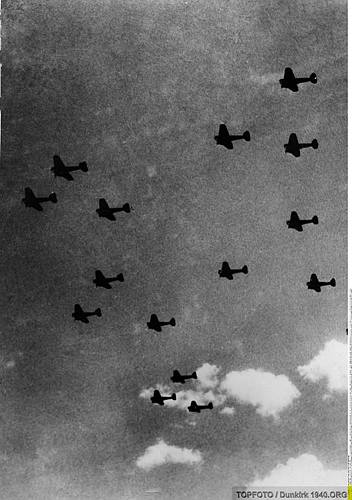
The 5th June marked the commencement of Operation Red by the German land forces, the offensive destined to overwhelm the remaining Allied forces in France. Over the next couple of weeks, the remnants of the French air force and the RAF flying from bases in England and France were thrown into a desperate battle to stem the German advance. However, by this point the situation was militarily hopeless and the Luftwaffe, operating from forward bases and with its strength in numbers, had gained complete air superiority. Heavy losses of men and machines continued at an alarming rate on the Allied side for little or no dividend. However, RAF Fighter Command was largely successful in protecting the retreat and evacuation of the remaining British military personnel from ports in western France.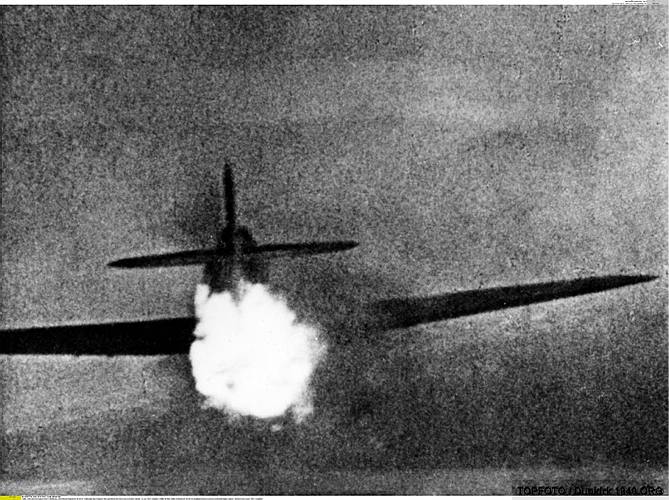
Finally, on the 18th June, the remaining RAF Hurricane squadrons in France evacuated their bases. The last to leave were Nos. 1 and 73 Sqns, which had been the first to arrive in September 1939. In the six weeks of Blitzkrieg, the losses in men and aircraft had been staggering. The RAF had lost approximately 1,000 aircraft over the Western Front. The French had lost 1,400 planes and the Dutch and Belgians between them, a further 300. Luftwaffe losses numbered around 1,800 aeroplanes of all types.
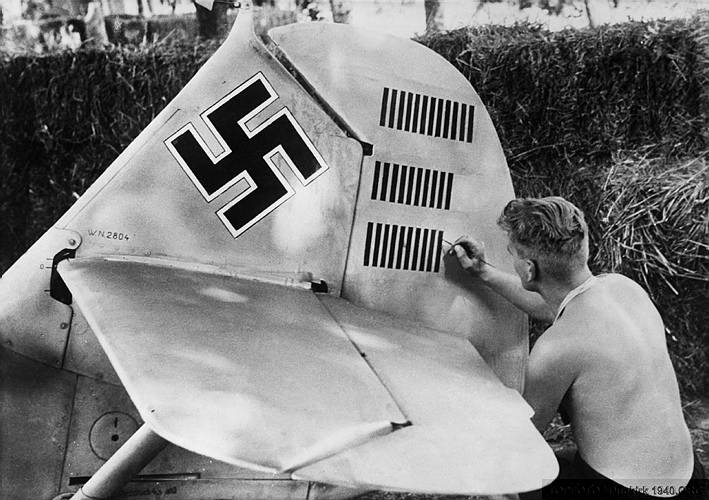
To view some Luftwaffe aerial reconnaissance photographs, click here.
To read about Sgt Ottewill's Hurricane Mk1, click here.
To read about Bristol Blenheim L1514, please click here.
To read about the Traveron Dornier 17-P, please click here.
To read about the Bf110C shot down near to Aubenton, click here.
To read about Fairey Battle L5546, click here.
To read about Billy Drake's Hurricane MkI, click here.
To read about Paul Richey's Hurricane MkI, click here.
To read about the Bois de Voncq Hurricane MkI, click here.
To read about a FW189 A-O shot down near Ramilies-Offus Belgium, click here.
To read about a Hurricane MkI which crashed in the Bois Sentelie France, click here.
Back
